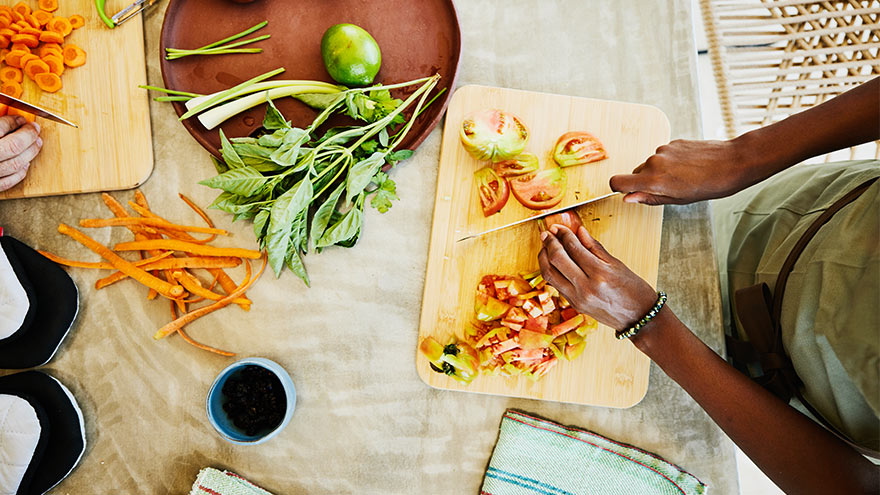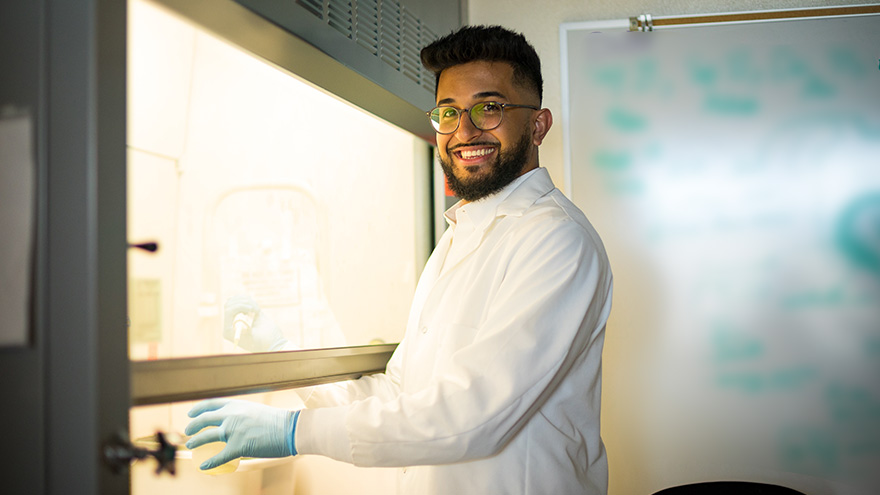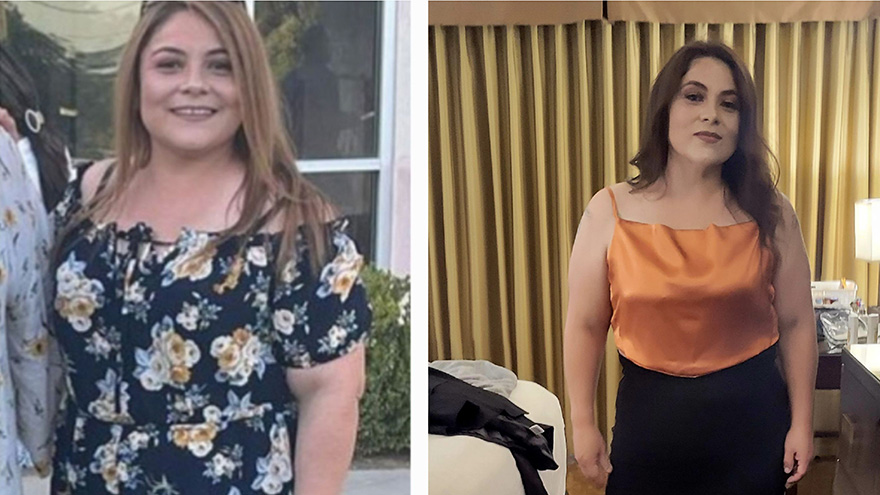Search
Results for 'what is an'
Clear-
Protect Yourself and Others with the Flu Shot
Flu shots don’t just protect those who get vaccinated; they protect everyone, including your family and the community. As we continue navigating the COVID-19 (coronavirus) pandemic, Renown Health infection prevention expert Whitney Robinson explains how getting your flu shot is vital for staying healthy. 5 Ways to Schedule Your Flu Shot Call Us! 775-982-5000 Urgent Care Appointments Renown Pharmacy Vaccinations Make an Appointment via MyChart Need a Doctor? Find One Now Reasons to get the flu shot Chills, body aches, fever, congestion; getting the flu isn’t fun. But in addition to protecting yourself with a flu shot, you’re helping reduce flu cases and hospitalizations, Whitney said. Flu shots are currently available at pharmacies throughout the Reno area. Whitney says the ideal time to get your flu shot is September through October, but remain relevant throughout the winter months as it only takes two weeks for the antibodies to develop in your body. This timing allows the vaccine to provide the strongest protection during the length of flu season. Who needs a flu shot? Almost everyone. The Centers for Disease Control and Prevention recommends the yearly flu shot for everyone six months of age and older. Equally, they consider it the first and most crucial step in protecting against the flu virus.
Read More About Protect Yourself and Others with the Flu Shot
-
A Journey of Support: How Grants from the American Cancer Society Impact Patients at Renown
For many cancer patients, a significant hurdle is simply getting to treatment. Patients from Nevada and California often face considerable financial and logistical challenges when traveling for care. Limited resources for transportation and lodging can result in missed appointments, treatment interruptions and delays in follow-up care. To address this crucial need, Renown Health Foundation partners with the American Cancer Society (ACS) to ensure our patients can access the care they need by reducing financial barriers many patients face ACS awarded $70,000 to Renown Health Foundation last year. These funds, distributed as gas cards and lodging support to qualifying patients, have proven to be a lifeline in assisting those in need. Fueling Hope with Gas Cards Through our partnership with ACS, Renown supported 128 cancer patients over the past year. This assistance provided 2,260 round trips, ensuring that patients from Nevada and California could attend their critical treatments at the William N. Pennington Cancer Institute at Renown. These patients, aged 15 to 94, traveled up to 320 miles, sometimes from remote areas such as Tonopah, Elko and Susanville, for their cancer care “We're deeply committed to supporting our patients through every step of their journey, and our partnership with the American Cancer Society is instrumental in making that happen,” said Jocelyn Mata, Oncology Social Worker at the Pennington Cancer Institute. “Without them, we wouldn't be able to provide the crucial financial assistance that many of our patients need.” Jocelyn works with qualifying patients to provide gas cards and accommodations at The Inn at Renown, a hotel at Renown Regional Medical Center. She ensures they can focus on their treatment without worrying about the financial burden. Lodging Support for Peace of Mind Along with transportation aid, we can provide safe and comfortable lodging for qualifying patients. "We encourage patients to rest and, if they have a long journey home, to stay overnight," said Dr. Max Coppes, Director of the William N. Pennington Cancer Institute. "Providing lodging support ensures they have a safe and comfortable place to recover before making the trip back." This assistance is crucial for those who travel far from home, allowing them to focus on healing without the added stress of finding and affording accommodation.
-
How Diet Can Affect Cancer Risk and Recovery
Cancer affects millions of lives worldwide. Though medical advancement has done a great deal to increase the human lifespan, proper nutrition has also been proven to help in the prevention of cancer. As researchers continue their hunt for a cure, there is a lot of information out there to support the argument that nutrition is an essential component in disease prevention and management. Nutrition Services: To learn more, call us at 775-982-4000 Linking Diet and Cancer Risk Evidence shows that our diets impact our vulnerability to cancer – and our ability to fight it. The American Cancer Society states that at least 18% of all cancers in the United States are related to excess body weight, physical inactivity, alcohol consumption, and/or poor nutrition. (American Cancer Society Guideline for Diet and Physical Activity | American Cancer Society). Sure, genetics can contribute, but research continues to support the belief that following a healthy diet can reduce the likelihood of developing cancer in the first place. Renown Health’s Jessica Blauenstein, MS, RDN, LDN, CSO, Registered Dietitian and Board-Certified Specialist in Oncology Nutrition confirms the importance of a nutritious diet consisting of: Fruits and Vegetables: Eating a variety of fruits and vegetables provides large amounts of vitamins, minerals and antioxidants. Nutrient-rich, they help in fighting off oxidative stress and inflammation, both of which are factors for developing cancer. Whole Grains: A diet rich in grains such as brown rice, quinoa and oats, contains substantial amounts of fiber that helps in digestion. A few studies have shown that whole grains might offer some protection against colorectal cancer. Lean Proteins: Reducing the amount of red and processed meats in the diet by substituting lean proteins, such as poultry, fish, beans and lentils may lower the risk of developing cancer. Red and processed meats have been associated with colorectal and other cancers when consumed in large amounts. Healthy Fats: Begin focusing on healthy fats from foods like avocados, nuts, seeds and olive oil. These fats are anti-inflammatory, which may play a beneficial role in disease prevention. Avoidance of Sugar and Processed Foods: Sugar and foods high in processed ingredients have been linked to an increased risk of obesity, type 2 diabetes and some cancers. It's important to limit the intake of sugary drinks, candy and snacks in the battle against cancer. A Role of Nutrition in Cancer Recovery Nutrition becomes even more critical for individuals who receive treatment and are in recovery. Treatments such as chemotherapy, radiation therapy and surgery can take a lot out of a body, affecting appetite, digestion and nutrient absorption. Proper nutrition during and after treatment can help: Support Immune Function: A good, balanced diet will provide the essential nutrients that support a resilient immune system, which is important in fighting off infections and supporting overall health during cancer treatment. Maintain Strength and Energy Levels: Proper caloric intake, protein and micronutrients prevent muscle wasting and fatigue, allowing patients to sustain their strength and energy. Address Side Effects: Certain foods and diets can help reduce or alleviate some common side effects associated with cancer treatment, including nausea, vomiting and mucositis. Eating small, frequent meals, maintaining good hydration, and avoiding spicy or acidic foods can all ease treatment-related discomfort associated with the GI tract. Facilitate Healing and Recovery: Nutrient-rich foods promote healing and the repair of tissues that may be damaged after surgery or other medical interventions. Foods high in proteins, vitamins and minerals play a significant role in repairing and replacing damaged tissues and cells. Correct Nutritional Deficiencies: Cancer and its treatment cause vitamin D, vitamin B12 and iron deficiencies in the diet. Nutrition therapy through a registered dietitian or nutritionist can identify those deficiencies and help manage them through dietary changes or supplementary means. Related information: Nourishing Your Loved One Through Cancer Treatment
Read More About How Diet Can Affect Cancer Risk and Recovery
-
Pediatric Sepsis: Causes, Symptoms and Treatment
Sepsis happens when a person's body reacts too strongly to an infection. Usually, our bodies fight infections with help from our immune system. But with sepsis, the body fights too hard, and that can be dangerous. Dr. Julianne Wilke, Pediatrics and Critical Care Medicine, examines pediatric sepsis's causes, symptoms and treatments and provides tips on preventing this potentially fatal condition. Most Common Causes Pediatric sepsis is a particularly concerning form of sepsis that can occur in children and infants. Therefore, it is vital for parents and caregivers to be aware of the indications of pediatric sepsis and to understand the causes. Bacterial infections are the most common cause of pediatric sepsis, accounting for over 80% of cases. Common Bacterial Causes: Staphylococcus infections (including Methicillin Resistant Staphylococcus Aureas - MRSA) Streptococcal infections (including those causing pneumonia and group B strep) Escherichia coli, or more commonly; E. coli Klebsiella and Pseudomonas infections Viral Infection Causes: Respiratory syncytial virus (RSV) Influenza Parainfluenza Adenovirus Human metapneumovirus Coronaviruses (including COVID-19) Other Causes: Fungal infections (but are relatively rare) Parasites, such as Giardia lamblia Pediatric Sepsis Symptoms Parents and caregivers need to be observant of sepsis symptoms in children and can include: Fever Extremely fast heart rate Rapid breathing Lethargy Pale or discolored skin Low blood pressure Confusion Slurred speech Abdominal pain Diarrhea & Vomiting Decreased urination Difficulty breathing Use the acronym SEPSIS: S – Slurred speech and confusion E – Extreme shivering or muscle pain/fever P – Passing no urine all day S – Severe breathlessness I – “I feel like I might die.” S – Skin mottled or discolored If any of these symptoms are present, seeking immediate medical attention is imperative.
Read More About Pediatric Sepsis: Causes, Symptoms and Treatment
-
5 Ways to Manage Seasonal Allergies
As we approach the warmer months, many plants bloom in northern Nevada, leading some to deal with the bothersome symptoms of seasonal allergies. Dr. Michael Babcock, a family medicine physician at Renown Medical Group—North Hills, discusses the effects of seasonal allergies and how to manage them. 1. Reduce your exposure to allergy triggers: Stay indoors on dry and/or windy days. Avoid outdoor tasks like weeding or gardening. If you must do chores outside, wear a face mask. After being outside, shower to rinse off pollen and change into a new pair of clothes. 2. When there's a lot of pollen in the air, seasonal allergies can flare up. These steps can help you reduce your exposure: Check your local newscast or search online for pollen forecasts and current pollen levels. If pollen counts are high, start taking allergy medications before your symptoms start. Close doors and windows at night if possible or any other time when pollen counts are high. Avoid or reduce outdoor activity in the early morning when pollen counts are highest. 3. Reduce allergy triggers by keeping your indoor air clean. Use air conditioning in both your house and car. Replace your home’s HVAC air filters and follow regular maintenance schedules. Use both a dehumidifier in combination with a portable high-efficiency particulate air (HEPA) filter in your bedroom. Routinely clean your home to remove dust and dirt.
-
Make Your Own Trail Mix: 4 Quick and Easy Recipes
Craving a crunchy, sweet, and nutritious snack? Try making your own trail mix! Perfect blends of nuts, dried fruits, and a touch of chocolate can be whipped up using bulk bin ingredients or pantry staples. Enjoy this delicious, healthy snack on a hike, at the office, or on your next road trip through Nevada's scenic deserts.
Read More About Make Your Own Trail Mix: 4 Quick and Easy Recipes
-
Eight Lessons from an MD-PhD Candidate at UNR Med
Meet newly minted Dr. Majid Khan, PhD., a native of Reno, and current MD-PhD candidate and first-generation medical student at the University of Nevada, Reno School of Medicine, who is on his way to a career as a Neurosurgery. While most graduate students often choose between pursuing a medical degree (MD) or a doctorate in philosophy (PhD), Majid has boldly picked both. He is one of three medical students currently in the UNR Med MD-PhD Program run by Dr. Caroline Cobine, PhD and Dr. Violeta Mutafova-Yambolieva, MD, PhD. "Research is not merely an act of sitting at a computer and reading papers – it's about answering the thought-provoking questions about things we come across on a daily basis. By critically evaluating these ideas we can implement solutions to enhance various aspects of the medical field and patient care with an overall goal of improving patient outcomes," Majid said. Majid recognizes that modern research extends beyond academia and holds significant value for hospitals. “Research contributes to improving patient outcomes. By reviewing the data from peer-reviewed research studies, medical professionals can be better prepared to deliver effective care following the most up-to-date guidelines and data,” he said. Majid's journey to pursuing his MD-PhD with a goal of becoming a physician-scientist-surgeon began following a summer in the PathMaker Cancer Research Program at the Huntsman Cancer Institute at the University of Utah. "It was by fate that I stumbled into this field – ever since I saw my first brain surgery, I haven’t been able to look back," Majid said. Here are some of the valuable lessons that Majid has learned along the way. 1. Beyond the 9 to 5, Embrace both 5 to 9s To avoid burnout and nurture personal passions, make your time spent outside of work and school intentional. Harness any free time to reconnect with friends, pursue hobbies and engage with mentors and mentees. 2. Collaboration is Key Work collectively with colleagues locally, nationwide and even worldwide. Cultivate environments to share knowledge and innovation, as well as wisdom, which will evidently lead to more impactful outcomes. 3. Shine a Spotlight on Your Colleagues Acknowledge and celebrate your colleagues in group settings when you notice something outstanding that they’ve said or done – it could anything big or small. Shining the spotlight onto those who are making positive changes within the hospital can inspire a beautiful culture of academic healthcare, which ultimately improves patient outcomes. 4. Redefine Mentorship Mentorship does not need to be confined to traditional frameworks. Seek out guidance in unexpected and untraditional places; sometimes, the most enlightening lessons and opportunities emerge from the most unlikely sources. 5. Diversify Your Experiences Embracing a diverse range of experiences enriches one's medical acumen. You never know when a seemingly unrelated job or experience will help in a scenario in your career. 6. Live By the Mamba Mentality Follow the late Kobe Bryant’s approach to life and work, the Mamba Mentality. This includes planning long-term goals, placing meaning in everything, striving for constant personal growth, following your passions and focusing on the process rather than the end goal. 7. Make Time for Your Loved Ones Don’t forget who helped you get to where you are in your life, specifically your family, friends, teachers and mentors. By making time for the most important and loving people in your life, you will be surrounded by positivity which will help propel you to new heights. 8. Plan your Next Five Moves We all have the ability to come from nothing and become something. Take the time to plan out everything and execute your moves with careful precision. Majid has plans to return to the Biggest Little City after completing Neurological Surgery Residency Program. If you would like to get in touch with Majid, please reach out to him via email at majidk@med.unr.edu.
Read More About Eight Lessons from an MD-PhD Candidate at UNR Med
-
A Transformative Journey: Mary's Bariatric Surgery Story at Renown Health
Embarking on the path to bariatric surgery is a unique and deeply personal journey. Individuals like Mary Escobar choose this life-changing route for reasons ranging from improved cardiovascular health to managing diabetes or finding relief from various health complications. In Mary's case, her two-decade-long healthcare journey not only underscores the challenges she faced but also highlights the support and expertise that ultimately led to her successful transformation through bariatric surgery. Mary's Resilience: December 2002 through February 2003 More than two decades ago, Mary experienced unforeseen health complications just days after giving birth via c-section. Septic shock, hemolytic uremic syndrome, thrombocytopenia, renal failure and a blood clot in her lung plunged her into a critical state. Intensive care, plasma exchange and a long recovery followed. After being discharged with compromised kidney function, Mary faced complete renal failure two years later, leading to dialysis and a spot on the donor list. Mary's brother, a perfect match, selflessly donated his kidney on Dec. 14, 2007, marking a turning point in Mary's health. However, the post-transplant period brought new challenges, including diabetes, high blood pressure and a significant weight gain, reaching 230 pounds. Determined to regain control, Mary explored various diets without success until she consulted with a bariatric doctor. Journey to Bariatric Surgery: November 2009 - April 2021 In November 2009, Mary opted for a gastric band, shedding 40 pounds within a year. Despite initial success, issues with the gastric band arose, prompting a consultation with Dr. John Ganser at Renown Health in April 2021. Together, they decided to transition to a gastric sleeve, with comprehensive education provided to ensure long-term success.
Read More About A Transformative Journey: Mary's Bariatric Surgery Story at Renown Health
-
Sterling Silver Club Shining Stars: Mark & Dana Combs
Dana and Mark Combs met through mutual friends and had a long friendship before they became a couple in 2009. They were married in 2011 in a private ceremony at a small Reno chapel, and a few months later had a big celebration with their family and friends. Encouraging Others to Succeed Over the years, the happy couple has spent much of their time volunteering and giving back to others in their community. Twenty-six years ago, Mark became a bilateral lower limb amputee. For the past 10 years, he has been a prosthetic consultant, helping other amputees learn how to cope with various challenges and encouraging them to keep living life to the fullest. “Mark is great with helping people,” said Dana. Dana also does a lot of rewarding work through a Philanthropic Educational Organization (P.E.O). She is an advocate for raising money to help women ages 18 and up gain an education. Dana also enjoys tutoring English as a second language. Enjoying Quality Time, Hobbies & Travel When Dana and Mark aren’t helping others, they are spending time with their family and friends, their dog Mia (a 3-year-old Maltipoo) or enjoying one of their many hobbies. Some of Mark’s favorite things to do include playing Solitaire and strumming on his guitar. “I love to garden and play crossword puzzles and word games,” said Dana. “I’m really looking forward to the springtime to spend more time in the garden.” She loves to work out and has a membership at the UFC gym in Reno through her Senior Care Plus gym benefit. Dana also has her own online Etsy store, where she sells homemade jam jars, candle holders and vintage dolls. “Last summer I sold my first edition Barbie that I got when I was 9 years old,” said Dana. “I made quite a profit on it.”
Read More About Sterling Silver Club Shining Stars: Mark & Dana Combs
-
Get to Know Sterling Silver Club Member Hanley Wong
This summer, we’re excited to introduce our featured Sterling Silver Club member, Hanley Wong. You may recognize him from the newest Senior Care Plus television commercial that has been airing locally since last October. Hanley happens to be a former employee of Renown Health and worked in the information technology (IT) department for 13 years. Today, he’s enjoying his retirement here in northern Nevada, with the occasional traveling to visit his family. Looking Back Hanley was born in San Francisco in 1944. He was in the U.S Army Reserve from 1966-1972, having traveled to various places including North Carolina, Salt Lake City, Long Beach, Hong Kong and Taiwan. While he was in the U.S. Army Reserve, he also attended college part-time and graduated from San Francisco State University in 1970 with a degree in business administration, emphasis in accounting. Hanley went into the IT field after he gained computer experience through his accounting background. “I started learning how to program with computers, then became a systems engineer where I did troubleshooting, maintenance and more,” said Hanley. “I’ve always enjoyed the challenging work in the IT field, and I got to meet all kinds of people.” Hanley started his first IT job at a small insurance company in San Francisco. He went on to work for the GAP headquarters and met his late wife there, who also worked for the company. They were married for 40 years and had two sons together. The family moved to Reno 21 years ago when Hanley was recruited by Washoe Medical Center, before it became Renown Regional Medical Center. “My favorite part about working at Renown was the camaraderie in the IT department; it was like a big family,” said Hanley. “I enjoyed making employees happy by solving their computer problems.” In 2005, Hanley was part of the team that helped install Epic, Renown’s electronic medical record system. Through that project, he traveled to a few different conferences and trainings with his team.
Read More About Get to Know Sterling Silver Club Member Hanley Wong
-
Childproof Your Windows - 8 Tips to Avoid Falls and Ensure Safety
Enjoying the fresh air through an open window is one of the many ways to enjoy the weather. However, open windows can pose safety risks, including injury or fatalities for young children aged two to five. We spoke with Jorge Montano-Figueroa, Pediatric Injury Prevention Specialist at Renown Children’s Hospital to understand how window falls can be prevented through safety devices and practicing careful habits. Use these tips to keep your children safe from window falls. Supervise Young Children: Always keep an eye on young children, especially when they are near windows. Supervision is the first line of defense against accidents. Keep Windows Closed and Locked: When possible, keep windows shut and secure. Locked windows prevent children from opening them and potentially falling out. Open Windows from the Top: If your windows allow, open them from the top down rather than the bottom up. This reduces the chance of children reaching the opening. Ensure that the opening is limited to four inches or less to prevent accidental falls. Install Child Safety Devices: For windows six feet or more above the ground, child safety devices such as window stops or guards are a must. These devices are readily available at hardware stores and for purchase online. They are designed to be easy for an adult to release in an emergency but secure enough to prevent a child from opening the window too wide. • Window Stops: These devices prevent windows from opening more than four inches, significantly reducing the risk of falls. • Window Guards: For windows that need to open more than four inches, window guards provide a barrier to prevent falls while allowing ventilation. Keep Climbing Hazards Away: Move furniture and other items that children could use to climb away from windows. Items such as chairs, beds, and couches can be stepping-stones for curious children. Establish a Safety Zone: Make it a household rule that children should play at least two feet away from windows. This safety zone helps keep them keep potential hazards out of reach. Childproof When Visiting: When visiting homes that may not be childproof, take extra precautions. Close and lock windows during your visit and watch your child closely to ensure they stay safe. Remember: Window Screens Are Not Safety Devices: Window screens are designed to keep bugs out, not children in. Screens can easily pop out if a child leans or pushes against them, leading to falls. Always use proper child safety devices instead of relying on window screens. By taking these precautions, you can significantly reduce the risk of window falls and keep your children safe. A few simple steps and some vigilance can make a big difference in preventing these potentially tragic accidents. For more information and to learn more, visit Pediatric Injury Prevention.
Read More About Childproof Your Windows - 8 Tips to Avoid Falls and Ensure Safety
-
Think Outside the Box: Healthy, Creative School Lunch Hacks
Today's school lunch is an opportunity to create a healthy, colorful midday meal, far from the days of soggy PB&Js. Here are simple tips, a week of lunch ideas, and a shopping list to help you pack a lunch your child won't want to trade. Packing lunches ensures your child gets a well-balanced meal, and making it a team effort by having kids help can save time by packing the night before. Nutritious Ideas Main dishes Lunch meat and low-fat cheese roll ups English muffin pizzas Sandwich wraps – meat, cheese and veggies in a whole grain tortilla Pita pockets stuffed with grilled chicken and vegetables Soup Chef salad with spinach, veggies, cheese, lunch meat and dressing Tuna or chicken salad on a mini bagel Snacks and sides Fresh or dried fruit Natural apple sauce Baked tortilla chips and salsa Veggie sticks and hummus Cheese slices or string cheese with whole grain crackers Homemade trail mix with nuts, seeds and raisins Pudding Homemade fruit roll ups Popcorn (add different toppings such as salt, garlic, cinnamon, sugar or cayenne pepper) Drinks Water If you child doesn’t like plain water, try adding a few slices of fresh fruit (strawberries, lime, lemon) for more flavor. School Lunch Menu: Day-By-Day We’ve put together a week’s worth of colorful, fun and healthy school lunch ideas your kids will love. And we’ve also created a shopping list to help you easily locate all the ingredients on your weekend shopping trip. Monday: Turkey BLTA Roll-ups Roll-up Ingredients Turkey, cold cuts Bacon Avocado Tomatoes Side Dish Choices Blueberries Cucumbers Carrot sticks Tuesday: Bacon & Cucumber Sandwich Sandwich Ingredients Whole wheat English muffin Cucumber Bacon Side Dish Choices Apples slices Strawberries Vanilla yogurt mixed with sprinkled cinnamon Wednesday: DIY Lunchables Lunchables Ingredients Crackers Turkey, cold cuts Cheese Side Dish Choices Blueberries Carrots Cucumber Thursday: Veggie Grilled Cheese Veggie Grilled Cheese Ingredients English muffin Cheese Tomato Spinach leaves Avocado Side Dish Choices Apples slices Strawberries Vanilla yogurt mixed with sprinkled cinnamon Tomatoes Friday: DIY Pizzas DIY Pizza Ingredients 2 toasted English muffins Pizza sauce Cheese Turkey pepperoni Side Dish Choices Celery Black olives Shopping List (under 20 items) Cold section: Dairy 1 large container of vanilla yogurt 1 package of your favorite cheese Cold section: Deli meats 1 package of turkey pepperoni 1 package bacon 1 package turkey cold cuts Inside aisles Whole wheat English muffins 1 can of whole black olives 1 jar of pizza sauce 1 box of whole wheat or multigrain crackers Produce department 1 cucumber 1 stalk of celery 2 apples 1 container of strawberries 1 avocado 2 tomatoes 1 bunch of spinach leaves 1 container of blueberries 2 carrots
Read More About Think Outside the Box: Healthy, Creative School Lunch Hacks











